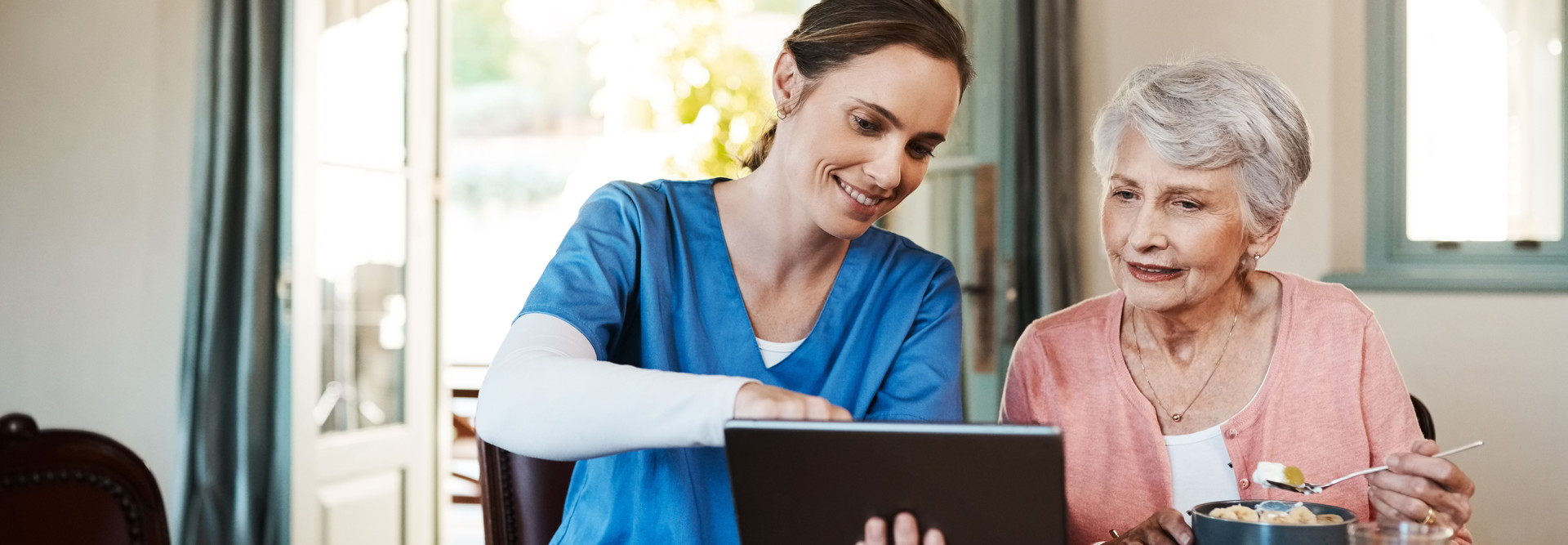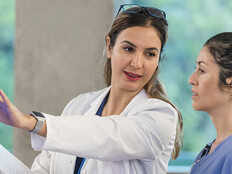From movement tracking sensors to online medical appointments, both common and emerging technologies have particular benefit for older adults, said Dr. David Rhew, chief medical officer and vice president of healthcare for Microsoft.
Speaking Tuesday at a CDW Bring IT On session — held virtually due to the cancellation of the HIMSS20 conference in Orlando, Fla. — Rhew noted that some tools have taken on even greater importance amid the COVID-19 pandemic.
Older adults are susceptible to the virus, he told CDW’s Ginna Baik, which puts an impetus on providers to leverage technology to care and to communicate. It’s among the reasons Microsoft is offering free basic versions of its Teams software to businesses for the next six months, Rhew said. Other tech companies have made similar efforts.
Still, he added, many developments in the senior care space are vital to a wide range of needs and scenarios.
Here are some takeaways from the conversation:
1. Virtual Visits Can Improve and Expedite Senior Care
The use of telehealth in senior living has already been growing, and expanded Medicare reimbursements are boosting adoption and familiarity. The option, Rhew says, is crucial to help older adults receive virtual care or a consultation before visiting a hospital where COVID-19 patients might be receiving treatment.
“This is something that will become a mainstay in how we manage care,” said Rhew, noting that the evolution of chatbots will help more patients connect to virtual care from afar. “It forces us all to rethink how we interact with each other and our healthcare provider networks.”
2. Artificial Intelligence Will Improve Monitoring and Risk Detection
Rhew shared in the webinar a personal story about his elderly mother-in-law, who recently suffered an unexpected fall despite being in overall good health. Such events occur once every second in the United States, federal data shows. A preventive tool: sensors designed to monitor movements and weakness.
A recent poll of our @HealthTechMag Twitter audience demonstrates some top uses for telehealth.
AI-powered technologies, as Rhew and Baik discussed, could be integrated into smart rooms in senior care centers — or in homes for those living alone — to record and report unusual behavior that might indicate a health risk. Notes Rhew, “Motion sensors can detect changes of activity: Has the person been in the bath for five hours or sleeping in a bed for 15 hours?”
INSIDER EXCLUSIVE: Become a HealthTech Insider to watch the entire Bring IT On webinar.
3. Consider User Needs and Abilities When Introducing New Tech
Ensuring robust IT infrastructure planning and support when planning new projects is a given. But senior care leaders must consider the applications most beneficial and feasible for older adults when designing a roadmap. Such assessments, Rhew said, should involve residents as well as their families.
“We see seniors who use smartphones all the time, and they may even have done telehealth,” Rhew said. “And you’ve got folks who are frightened of technology and hesitant to try anything new. There are approaches for everyone.”
Keep this page bookmarked for our ongoing virtual coverage of HIMSS20. Follow us on Twitter at @HealthTechMag and join the conversation using the hashtags #VirtualHIMSS20 and #CDWHIMSS.












